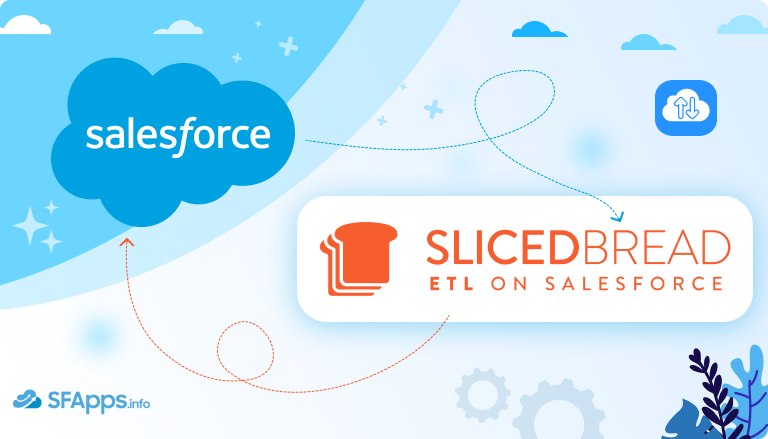
Introduction: Why Do You Need a Data Integration?
For businesses that rely on Salesforce, data integration plays a key role in ensuring that information is accurate, accessible, and actionable. Many organizations use Salesforce to manage customer data, an ERP system for financials, and other platforms for inventory or marketing. When these systems aren’t connected, data can become scattered, making it challenging to access the complete picture and slowing down workflows. Effective Salesforce data integration solves this by unifying data, so teams have a consistent, real-time view across all systems.
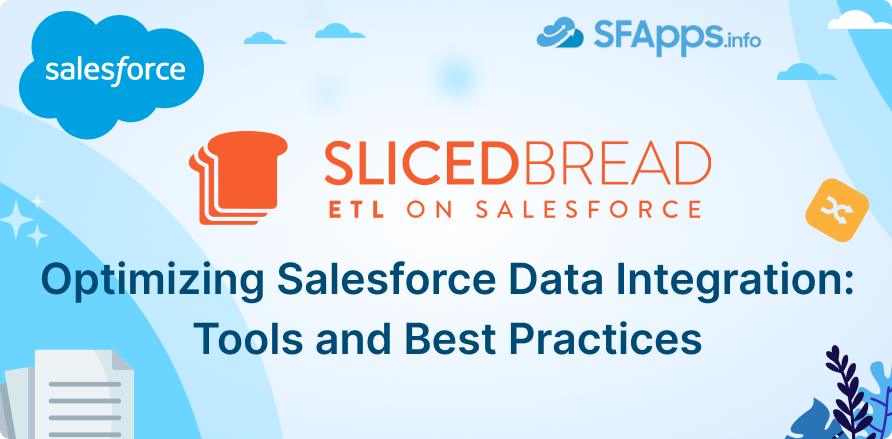
A robust ETL (Extract, Transform, Load) tool simplifies this integration. With ETL, data can be extracted from multiple sources, transformed to fit Salesforce’s data structure, and loaded where it’s needed, all while maintaining high data quality. For instance, imagine a retail business that uses Salesforce to track customer orders and a separate system to manage inventory. Without data integration in Salesforce, sales reps may have to check multiple systems to confirm product availability, which can delay responses and create potential errors. By using an ETL tool to bring inventory data into Salesforce, sales reps get real-time availability updates in one place, speeding up service and reducing mistakes.
In this article, we’ll cover Salesforce data integration tools, best practices, and popular methods for data integration in Salesforce, while providing links to helpful Data Migration Tool Salesforce that can keep your data organized and consistent. Whether integrating Salesforce with a data warehouse or simply connecting it to another app, these strategies and tools can make your data integration smoother and more reliable.
- Understanding Data Integration in Salesforce
- Key Data Integration Tools for Salesforce
- Setting Up Effective Data Integration Strategies in Salesforce
- Best Practices for Successful Salesforce Data Integration
- 1. Start with Data Preparation
- 2. Automate Recurring Data Integration Tasks
- 3. Monitor and Validate Data Quality Regularly
- 4. Test Data Integration in a Sandbox Environment
- 5. Establish Clear Data Governance Policies
- 6. Regularly Review and Update Integration Strategies
- 7. Prioritize Security Throughout the Integration Process
- 8. Document Your Integration Processes
- How Sliced Bread ETL Solves Common Data Challenges for You
- Wrapping up: Optimize Data Integration in Salesforce with the Right Tools
Understanding Data Integration in Salesforce
Data is everywhere, in every system, database, and app we use. But when each platform keeps its own isolated data, it’s hard to see the complete picture. Data integration in Salesforce fixes this by combining information from different sources, breaking down data silos, and making all data accessible in one place. This unified approach helps teams make better decisions, work more efficiently, and stay up-to-date with real-time data.
What Is Data Integration?
Data integration is the process of connecting data from multiple systems into one view. For example, a company might have customer information in Salesforce, sales data in a separate database, and inventory details in a third system. Without integration, it’s difficult to get a full view of the business. Salesforce data integration solves this by unifying data so it’s easier to analyze, providing clearer insights, and enabling quicker, more confident decision-making.
Insight:
Do you know what exactly ETL tools do? ETL tools simplify the complex process of managing data by focusing on three key steps:
- Extract: ETL tools gather data from multiple sources, such as spreadsheets, databases, cloud applications, or even third-party software. Think of it as gathering all the different pieces of information you need, no matter where they currently live.
- Transform: Once the data is collected, ETL tools clean, restructure, and format it to make sure it matches Salesforce’s requirements. This step ensures that all inconsistencies are resolved and the data is ready for smooth use. Imagine transforming messy, unorganized data into something precise and consistent, like turning a pile of ingredients into a ready-to-serve meal.
- Load: Finally, the polished data is moved into Salesforce, making it accessible and ready for your team to use effectively. With this step, everything you need is neatly in place, within Salesforce, at your fingertips.
Without ETL tools, these steps would have to be done manually, a process that would be not only time-consuming but also prone to errors. By automating these steps, ETL tools save time and minimize mistakes, giving you clean and usable data without the headache.
Types of Data Integration in Salesforce
Different approaches to data integration in Salesforce allow businesses to choose the method that best meets their needs. Here are some common types:
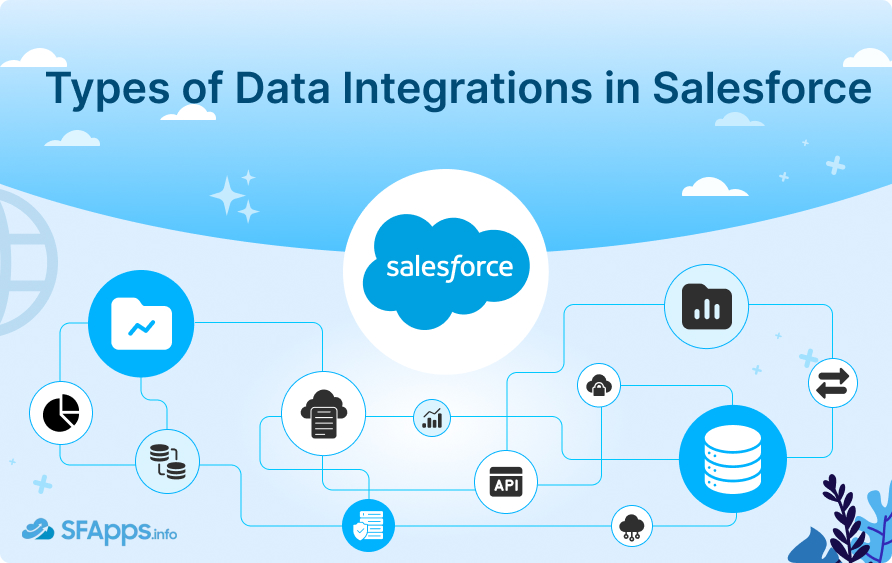
- Data Warehousing Integration – Data from multiple sources is cleaned, organized, and stored in one central place, a data warehouse. This makes it easy to run comprehensive reports, as all data is available in a single view. By using data warehouse integration with Salesforce, businesses can analyze trends and make informed decisions based on all their data.
- Middleware Data Integration – Middleware acts as a connector between systems, moving data between Salesforce and other sources in a way that keeps everything in sync. It’s especially useful for companies that have multiple systems exchanging data regularly, like syncing customer information between Salesforce and an ERP.
- Data Consolidation – Data consolidation gathers information from different systems and combines it into one place. ETL (Extract, Transform, Load) tools make this process easy by pulling data from each source, reformatting it to fit Salesforce, and loading it in. This approach creates a complete view of company data and is especially helpful for mass updates and record management in Salesforce.
- Application-Based Integration – Application-based integration uses software to pull data from various systems, often in real time. This is ideal for companies needing up-to-the-minute data, such as sales teams who need instant customer insights. This type of integration makes sure information across platforms stays current.
- Data Virtualization – Data virtualization allows teams to access data from its original source without moving or copying it. It creates a combined view of the data without storing it in a central repository, offering flexibility for businesses with diverse data storage needs.
Benefits of Data Integration in Salesforce
Data integration offers a range of benefits for any organization, helping them work smarter and operate more effectively. Here are a few major advantages of using data integration tools in Salesforce:
- Better Decision-Making: Integrated data gives a full view, enabling smarter choices. When all data is accessible in Salesforce, teams can make decisions based on complete and accurate information, whether it’s for customer insights, trend analysis, or internal planning.
- Increased Efficiency: Automating data integration saves time and reduces mistakes from manual data entry. This streamlined process frees up teams to focus on high-impact tasks instead of managing data across systems.
- Improved Data Quality: During integration, data from different sources is cleaned and standardized, leading to high-quality, reliable information. This is essential for accurate reporting and data analysis. ETL Tools Salesforce help ensure data accuracy, especially during complex integrations.
- Stronger Collaboration: Integrated data creates a single source of truth that everyone in the organization can access. This shared information allows different teams to collaborate easily, knowing they’re all working with the same data.
- Cost Savings: With integrated data, companies can reduce storage and maintenance costs by managing data in a single, organized system. Automation also lowers expenses by cutting down on manual tasks, which saves time and resources.
By understanding these types of data integration in Salesforce and the benefits they bring, businesses can choose the approach that best fits their needs. This ensures they’re getting the most out of their data for better insights, smoother operations, and faster decision-making.
Key Data Integration Tools for Salesforce
Moving data into Salesforce can be challenging, especially when dealing with large datasets or needing specific data transformations. ETL (Extract, Transform, Load) tools streamline this process, helping to move, clean, and organize data for easy access and use in Salesforce. Here’s an overview of some leading Salesforce data integration tools and their unique features:
1. Salesforce Data Loader
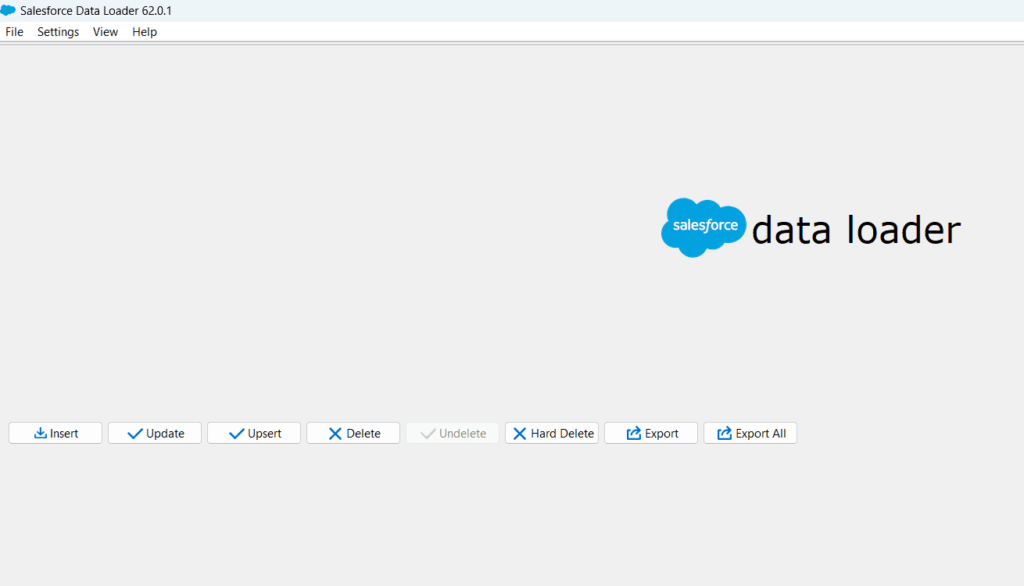
Salesforce Data Loader is Salesforce’s native tool for bulk data operations, perfect for high-volume imports and exports. Users can upload or delete thousands of records at once, but it lacks advanced data transformation capabilities. Salesforce Data Loader is suitable for straightforward data tasks where complex field mapping or automation isn’t required, making it ideal for handling large but simple data imports.
2. DataLoader.io
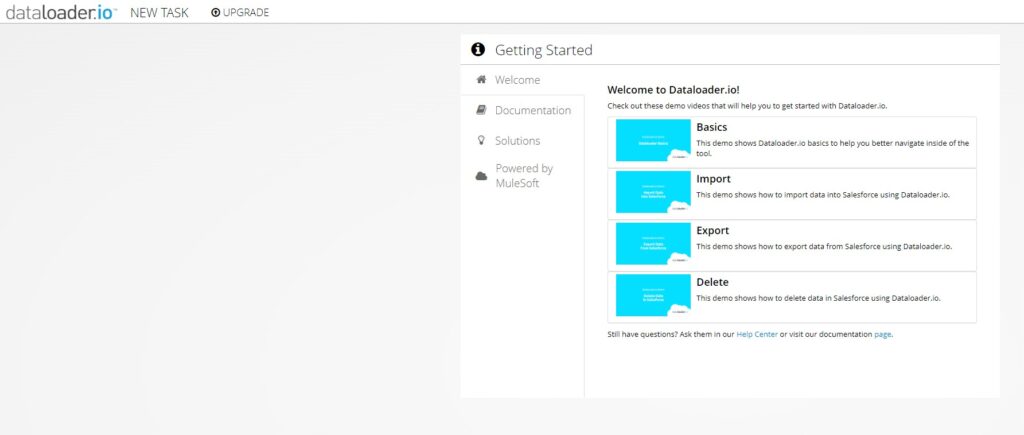
DataLoader.io is a browser-based tool, removing the need for software installation. It’s flexible and easy to use, with options for importing, exporting, updating, and deleting data directly through the cloud. The free plan allows up to 10,000 records per task, while premium plans unlock the capacity to handle up to 5 million records per upload. DataLoader.io also offers scheduling features, which let users set recurring tasks, useful for regular data updates without manual input.
3. Data Import Wizard
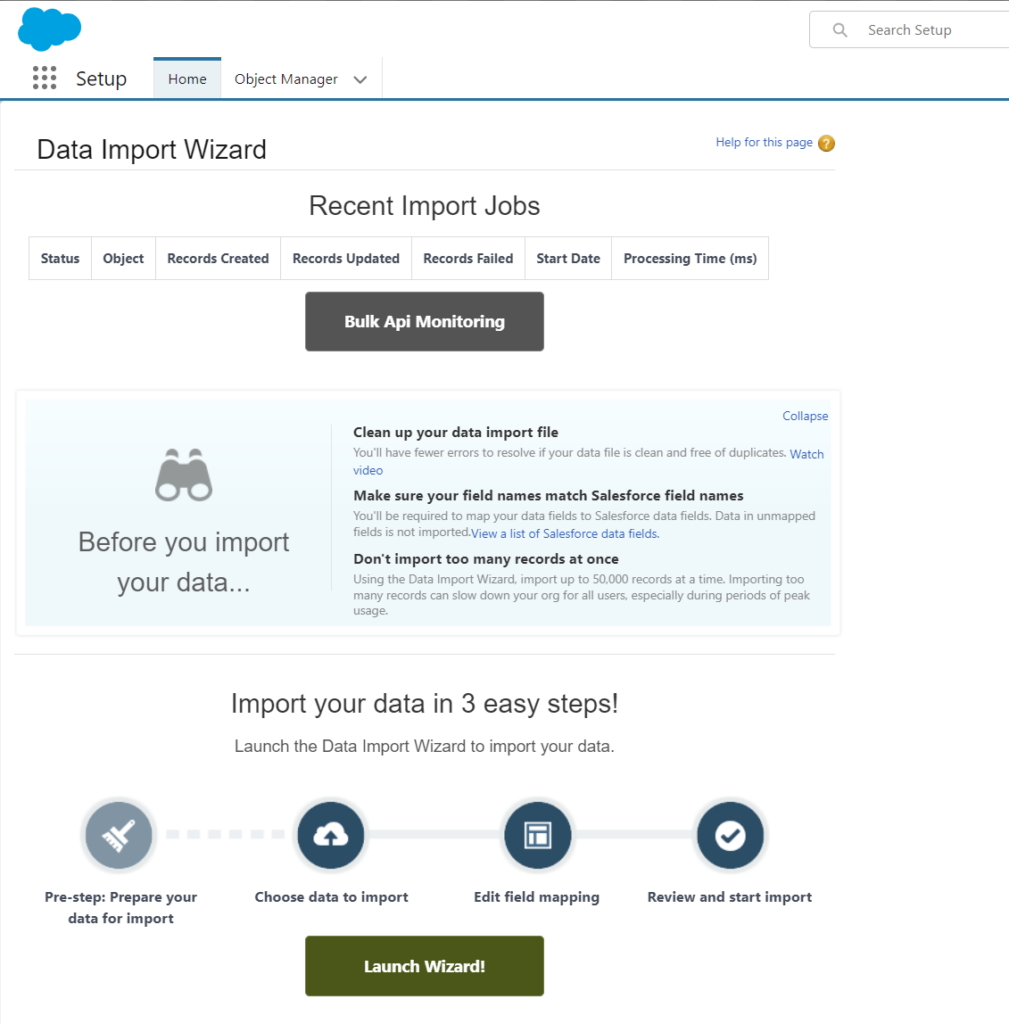
The Data Import Wizard is another built-in Salesforce tool that guides users through a step-by-step process for importing smaller datasets, such as contacts or leads. With a limit of 50,000 records per import, it’s best suited for smaller projects or simple updates. While it’s easy to use, it lacks features for advanced transformations, validation, and automation, making it suitable for straightforward data uploads but less ideal for complex tasks.
4. Sliced Bread ETL
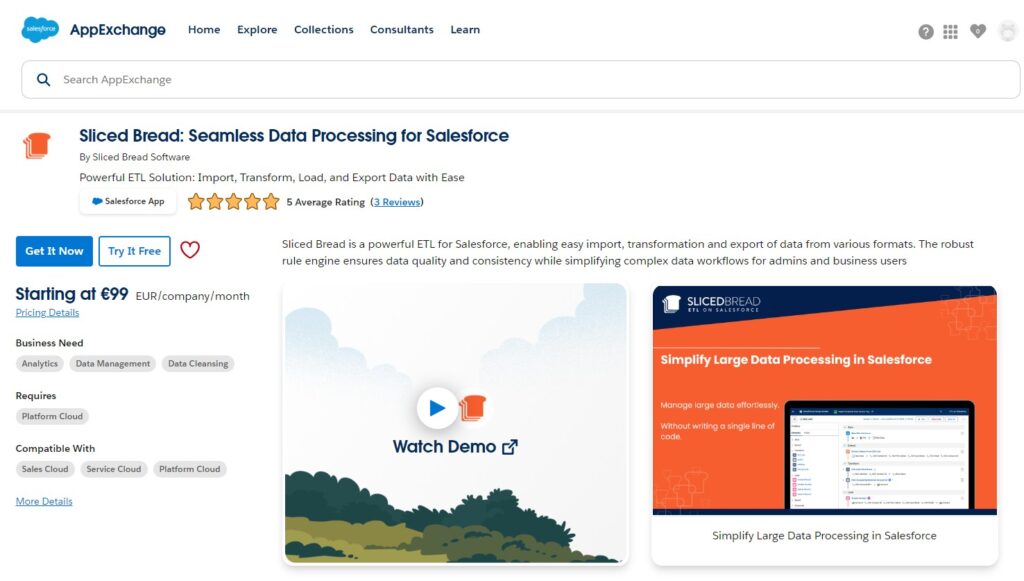
Sliced Bread ETL is a powerful ETL tool tailored specifically for Salesforce, offering a range of advanced features that enhance data integration. Known for its comprehensive data transformation, automation, and error-handling capabilities, Sliced Bread ETL goes beyond the functionality of standard tools to meet the demands of businesses with large or complex data requirements.
Here are some standout features of Sliced Bread ETL:
- Comprehensive Data Transformation Capabilities: Sliced Bread ETL excels at data transformation, making it easy to map and convert data into Salesforce-compatible formats. This tool allows users to clean, format, and organize data before loading, helping ensure data integrity. With flexible field mapping and support for various data types, like text, numbers, and dates, Sliced Bread ETL enables smooth and precise data integration, keeping Salesforce data consistent.
- Automation and Scheduling: Automation is a core feature of Sliced Bread ETL. Users can set up automated schedules, whether daily, weekly, or even hourly, to run their data extraction, transformation, and loading tasks, minimizing manual work. Additionally, it supports trigger-based automation, where tasks initiate based on specific events or conditions, making it ideal for businesses needing regular, reliable updates in Salesforce.
- Error Handling and Data Validation: To maintain high data accuracy, Sliced Bread ETL offers advanced error handling. It can detect and correct common issues, like duplicates or missing values, as data is processed, reducing manual data cleaning. The tool also generates validation logs for each ETL task, providing a summary of any errors or issues encountered so users can review and resolve them promptly.
- Scalability for Growing Businesses: As a business grows, so does its data, and Sliced Bread ETL is built to handle increasing volumes and complexity. With optimization for large datasets, it completes tasks quickly, even with millions of records. Additionally, it offers flexible resource allocation, allowing users to scale resources as needed to accommodate their data demands without unnecessary costs.
- Seamless Salesforce Integration: Sliced Bread ETL is specifically designed for Salesforce, integrating smoothly with its data structure and handling objects, fields, and relationships with precision. This native compatibility minimizes errors and keeps data consistent across systems, enhancing the Salesforce experience.
- Customization Options: Every organization’s data needs are different, and Sliced Bread ETL allows users to create custom data workflows, transformation rules, and validation processes tailored to their unique requirements. Users can define custom fields and formulas within the ETL process, giving them control over how data is managed and presented in Salesforce.
Sliced Bread ETL stands out as a comprehensive solution for Salesforce data integration. For example, an e-commerce company needing to sync customer and order data from multiple platforms could automate these data flows with Sliced Bread ETL. This reduces manual work, prevents errors, and ensures that Salesforce always has the latest data on hand.
Insight:
Did you know that Sliced Bread ETL can help you mass upload and import records into Salesforce from not just CSV or JSON files, but also from Excel, XML, and NDJSON? This versatility allows you to work with different file formats, making data integration more convenient and efficient.
Each of these tools provides unique capabilities to meet different business needs. While Salesforce Data Loader and Data Import Wizard are solid for basic tasks, Sliced Bread ETL offers the advanced transformation, automation, and scalability options that larger or data-intensive organizations often require.
Setting Up Effective Data Integration Strategies in Salesforce
Establishing effective data integration strategies is key to keeping your Salesforce data consistent, accurate, and accessible. With clear strategies, you can avoid common data issues like duplicates, mismatched formats, or incomplete records that often result from pulling data from different sources. Implementing these strategies helps streamline your data integration and reduces the time spent on manual corrections.
Why Data Integration Strategies Matter
When data flows into Salesforce from various systems, such as ERP, marketing, or finance platforms, each may have a different structure or format. Defining integration strategies ensures that information arrives in Salesforce accurately and seamlessly, supporting day-to-day operations and decision-making. By automating these processes, you not only save time but also keep your Salesforce data clean and reliable.
Key Data Integration Strategies for Salesforce
- Data Standardization – Standardizing data means setting common formats and conventions that all data must follow. For example, for mass update leads in Salesforce, ensuring all dates appear in the same format (e.g., YYYY-MM-DD) or using consistent casing for text fields, like names. This strategy makes data easier to analyze and search. Tools like Sliced Bread ETL can automatically apply these standardizations, reducing manual reformatting.
- Data Deduplication – Duplicate records clutter Salesforce, making it hard for teams to find accurate information. Using deduplication strategies helps prevent this by checking for uniqueness. For example, when importing customer records, you might set a strategy to check for duplicate email addresses or phone numbers. Sliced Bread ETL automates deduplication by detecting and managing duplicate records, helping maintain a clean dataset in Salesforce.
- Data Validation – Validation ensures that data is complete and meets required conditions before it’s integrated. For instance, you might require every customer record to include an email and phone number. Sliced Bread ETL allows you to set these validation checks as part of your integration, ensuring that incomplete or incorrect data doesn’t enter Salesforce. Validation logs also help identify and resolve any issues during integration.
- Field Mapping and Conversion – Field mapping aligns data fields from source systems with those in Salesforce. For example, if an ERP system uses “Customer ID” but Salesforce uses “Account ID,” mapping connects these fields correctly. Field mapping and conversion strategies are essential when dealing with multiple data sources that might use different formats or names. Sliced Bread ETL simplifies this process with flexible mapping and conversion tools, aligning fields accurately and transforming data types as needed.
- Automated Data Cleaning – Data cleaning removes irrelevant or outdated information from the dataset before it’s integrated into Salesforce. This strategy helps eliminate empty fields, unnecessary characters, and invalid entries, ensuring that Salesforce only contains useful, high-quality data. With automated cleaning tools like those in Sliced Bread ETL, you can ensure consistent data quality without manual adjustments.
- Error Handling and Resolution – Handling errors during integration is crucial, especially for large or complex datasets. Error-handling strategies specify how to manage issues when they arise, whether to halt the integration or continue processing while logging errors. Sliced Bread ETL offers advanced error-handling options that automatically detect and correct issues, while also providing logs for further review. This helps prevent errors from disrupting the integration process.
After defining your strategies, the next step is to implement them in Salesforce and configure your chosen ETL tool. For instance, Sliced Bread ETL allows you to build custom workflows to automate these strategies, with scheduled tasks that ensure consistency. Testing in a sandbox environment can help identify and resolve any potential issues before going live.
Setting up effective Salesforce data integration strategies improves data quality and keeps your Salesforce environment organized. With an advanced ETL tool like Sliced Bread ETL, you can automate and enforce these strategies, creating a more efficient and dependable data integration process.
Best Practices for Successful Salesforce Data Integration
Implementing Salesforce data integration best practices is essential for maintaining data quality, reducing errors, and ensuring the integration process is efficient. Covers Salesforce data integration tools, best practices, and popular methods for data integration in Salesforce, while providing links to helpful master data management tool Salesforce that can keep data organized and consistent. Below are some strategies to help you optimize Salesforce data integration and enhance the use of Salesforce data integration tools.
1. Start with Data Preparation
Thorough data preparation is the foundation of successful data integration in Salesforce. This involves cleaning data, removing duplicates, and standardizing formats before integrating it into Salesforce. By ensuring only high-quality data enters Salesforce, businesses can avoid common issues and ensure data flows smoothly according to established Salesforce data integration rules.
2. Automate Recurring Data Integration Tasks
Automating recurring tasks in Salesforce data integration minimizes manual effort and reduces the risk of errors. Automation is especially helpful for regular data syncs and updates, ensuring data accuracy without ongoing intervention. Many Salesforce data integration tools offer automation features, allowing for reliable and consistent data flows.
3. Monitor and Validate Data Quality Regularly
Ongoing validation and monitoring are crucial for maintaining high data quality in Salesforce. Regularly reviewing data helps catch discrepancies or issues that may arise during data integration in Salesforce. Validation is a key component of Salesforce data integration rules and supports better reporting and decision-making across the organization.
4. Test Data Integration in a Sandbox Environment
Testing in a sandbox environment before applying Salesforce data integration options in a live setting ensures that integrations run smoothly. This practice allows teams to address potential issues without affecting production data. By testing data integration rules in Salesforce beforehand, organizations can prevent errors in their live environment.
5. Establish Clear Data Governance Policies
Data governance policies provide a framework for managing and securing data during Salesforce data integration. These policies define who can access and edit data, ensuring consistency and security. Effective governance aligns departments around data integration rules Salesforce and promotes a reliable data integration Salesforce that everyone can depend on.
6. Regularly Review and Update Integration Strategies
As business needs change, so should your Salesforce data integration strategies. Regularly revisiting and refining your Salesforce data integration options ensures they continue to meet organizational goals. For example, increasing data sync frequency or updating validation criteria can help keep data integration strategies effective as your business and data volumes grow.
7. Prioritize Security Throughout the Integration Process
Data security is critical when handling sensitive information in Salesforce. Ensuring that data integration tools in Salesforce follow security protocols helps protect valuable information. By using secure practices and regularly reviewing Salesforce data integration rules, businesses can maintain data integrity across systems and guard against data breaches.
8. Document Your Integration Processes
Clear documentation of Salesforce data integration processes supports consistency, troubleshooting, and team onboarding. Comprehensive documentation should include data sources, field mappings, transformation rules, and error-handling methods. This clarity strengthens the overall integration process, making it easier to adapt as your organization’s data integration needs evolve.
By following these best practices for Salesforce data integration, organizations can enhance data quality and streamline workflows. In conclusion, we’ll discuss how advanced Salesforce data integration tools support these practices, making it easier to create reliable, secure, and efficient data integration in Salesforce.
Insight:
How Sliced Bread ETL Solves Common Data Challenges for You
Sliced Bread ETL makes handling data much simpler by addressing common issues in the ETL process:
Automated Processes: Sliced Bread ETL automates the entire ETL workflow, making it faster and easier to manage large amounts of data. Instead of manually extracting, transforming, and loading data, everything runs automatically, saving time and effort.
Accurate Data Transformation: The tool ensures data from various sources is cleaned up and properly formatted for Salesforce, which reduces inconsistencies and ensures everything is in the correct structure. This way, your data is always reliable and ready for use.
Error Handling: Sliced Bread ETL spots and fixes errors during the data processing stages, which means fewer mistakes and less manual intervention. This reduces the risk of bad data causing problems later.
Handles Large Data Volumes: Built to handle growing data needs, Sliced Bread ETL is ideal for expanding businesses that have increasingly large datasets to work with. It scales as your business does.
Enhanced Security: The tool includes security features that protect your data throughout the ETL process, ensuring sensitive information is kept safe and secure.
Using a tool like Sliced Bread ETL makes managing Salesforce data so much easier. It takes the stress out of moving, cleaning, and loading data, allowing you to focus on using that data to grow your business instead of getting bogged down by manual processes.
How Sliced Bread ETL Solves Common Data Challenges for You
Sliced Bread ETL makes handling data much simpler by addressing common issues in the ETL process:
- Automated Processes: Sliced Bread ETL automates the entire ETL workflow, making it faster and easier to manage large amounts of data. Instead of manually extracting, transforming, and loading data, everything runs automatically, saving time and effort.
- Accurate Data Transformation: The tool ensures data from various sources is cleaned up and properly formatted for Salesforce, which reduces inconsistencies and ensures everything is in the correct structure. This way, your data is always reliable and ready for use.
- Error Handling: Sliced Bread ETL spots and fixes errors during the data processing stages, which means fewer mistakes and less manual intervention. This reduces the risk of bad data causing problems later.
- Handles Large Data Volumes: Built to handle growing data needs, Sliced Bread ETL is ideal for expanding businesses that have increasingly large datasets to work with. It scales as your business does.
- Enhanced Security: The tool includes security features that protect your data throughout the ETL process, ensuring sensitive information is kept safe and secure.
Using a tool like Sliced Bread ETL makes managing Salesforce data so much easier. It takes the stress out of moving, cleaning, and loading data, allowing you to focus on using that data to grow your business instead of getting bogged down by manual processes.
Wrapping up: Optimize Data Integration in Salesforce with the Right Tools
Integrating data into Salesforce can bring big benefits, helping businesses get better insights, simplify processes, and make smarter decisions. By following best practices for Salesforce data integration, like preparing data, checking for accuracy, using automation, and testing in a sandbox, organizations can keep their Salesforce data clean, accurate, and reliable.
Choosing the right Salesforce data integration tools is key to making this process easier and more effective. Each tool has its strengths: Salesforce Data Loader is useful for bulk data uploads, DataLoader.io works well directly in your browser, and the Data Import Wizard is great for smaller, simpler tasks.
For advanced needs, however, Sliced Bread ETL stands out with its powerful features built specifically for Salesforce. This tool is designed to handle complex data processes efficiently. It offers extensive data transformation options, allowing you to clean and organize data before it reaches Salesforce. Its automation capabilities let you schedule tasks to run at set times, reducing manual work and keeping your data up-to-date. Plus, Sliced Bread ETL’s error-handling and validation features catch and correct common issues, like duplicates or missing fields, ensuring data quality. Built for scalability, this tool is equally effective for managing small datasets or millions of records, adapting as your business grows and your data needs evolve.
Whether you’re syncing Salesforce with other systems, managing large data imports, or using a Salesforce data warehouse integration for deeper analysis, the right tools and strategies can simplify these tasks. By combining the right approach with the best tools, businesses can keep their data organized, break down silos, and make Salesforce a single, trusted source of information.
In short, Salesforce data integration is about more than connecting systems, it’s about building a smooth, secure, and efficient setup that helps your business grow.

Dorian is a 6X Certified Salesforce Developer and Administrator with a start in the IT world as a CRM Admin in 2020. Since diving into Salesforce in 2021 via Trailhead and Focus on Force, he has achieved a Ranger Rank, earned several Superbadges, and bagged certifications including the Salesforce Certified Platform Administrator, Platform App Builder, Platform Foundations and Platform Developer by 2023. In 2024 he also became Salesforce Certified AI Associate and earned Agentforce Specialist Certification in 2025. Dorian is very keen on continuous learning, always looks for fresh ways to improve his knowledge. He enjoys running, boxing, kickboxing and reading diverse kinds of books in his free time.


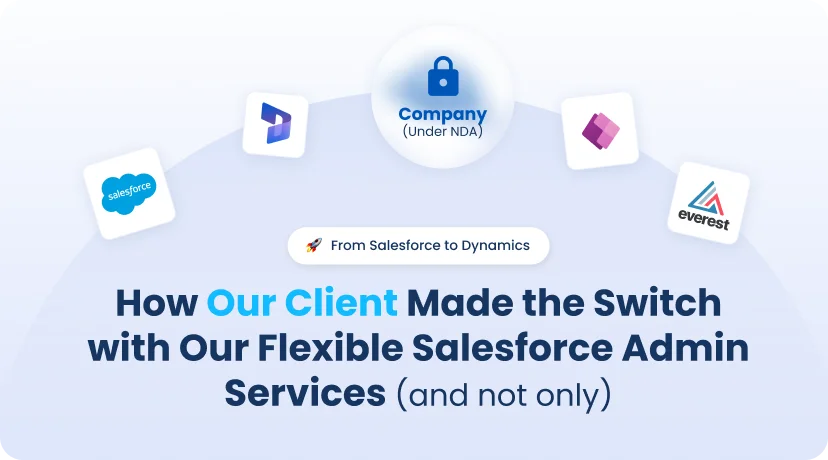


 Previous Post
Previous Post Next Post
Next Post